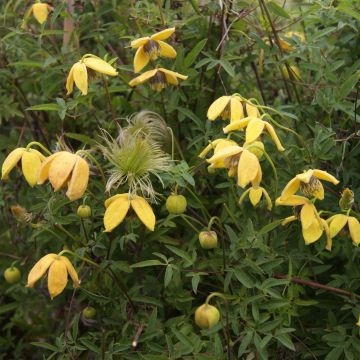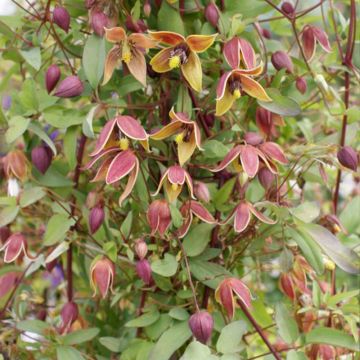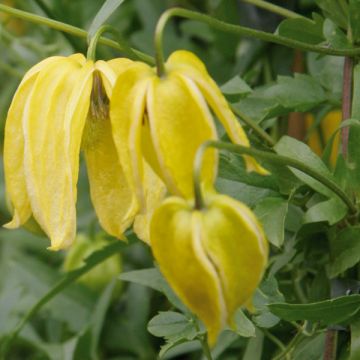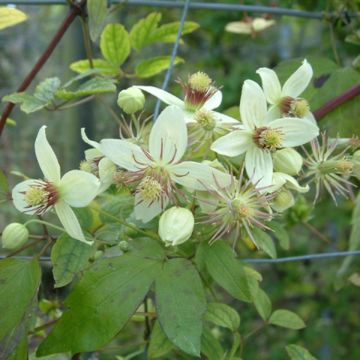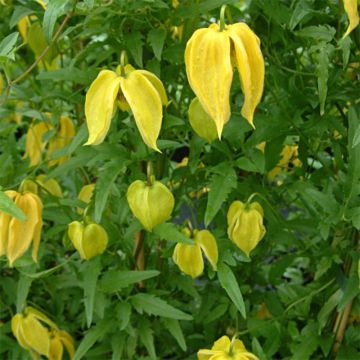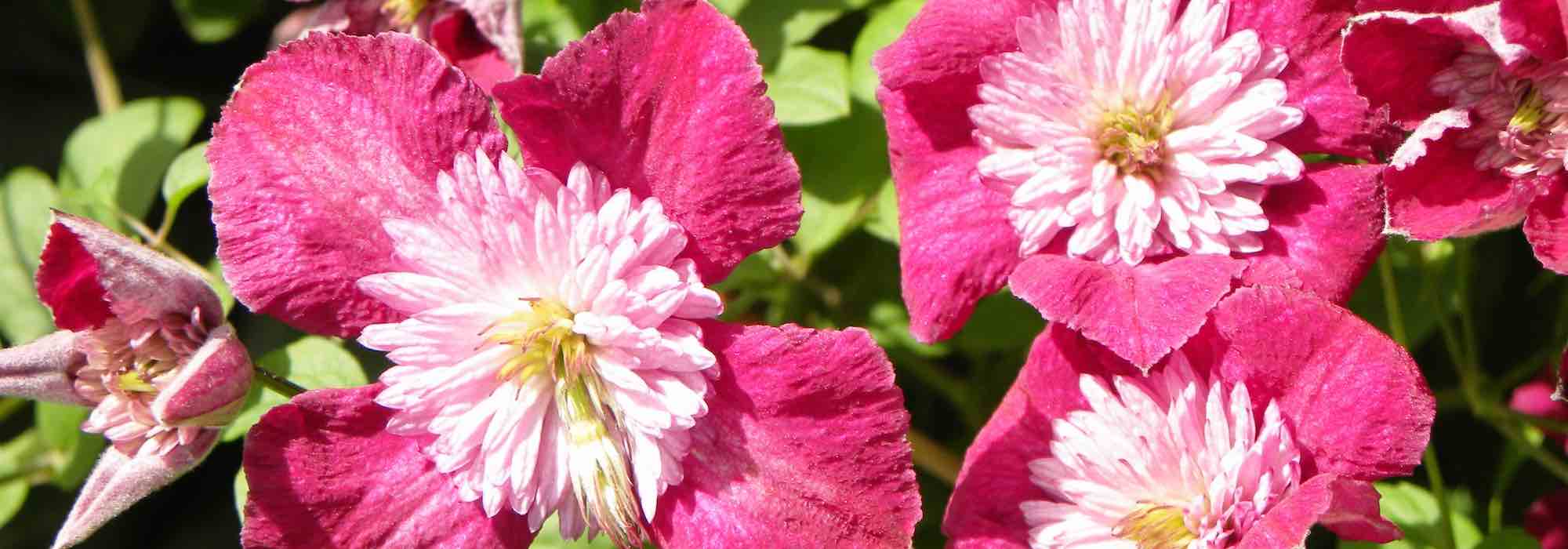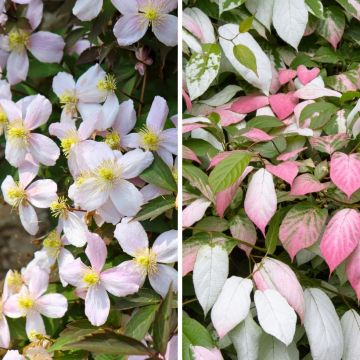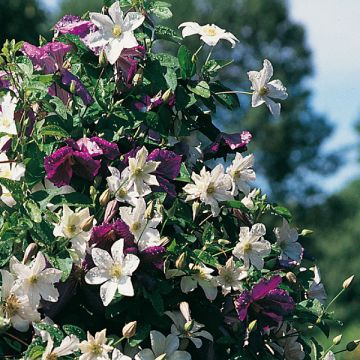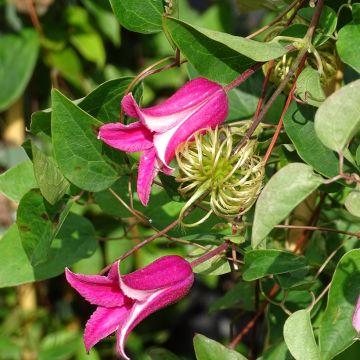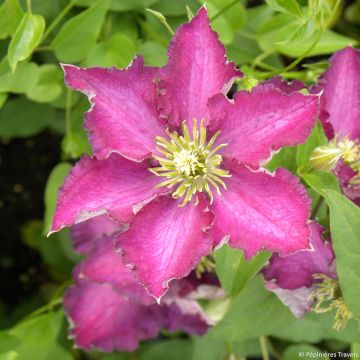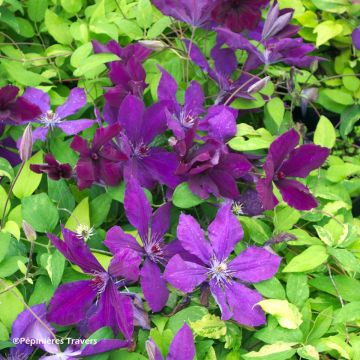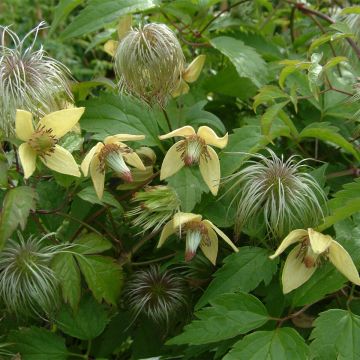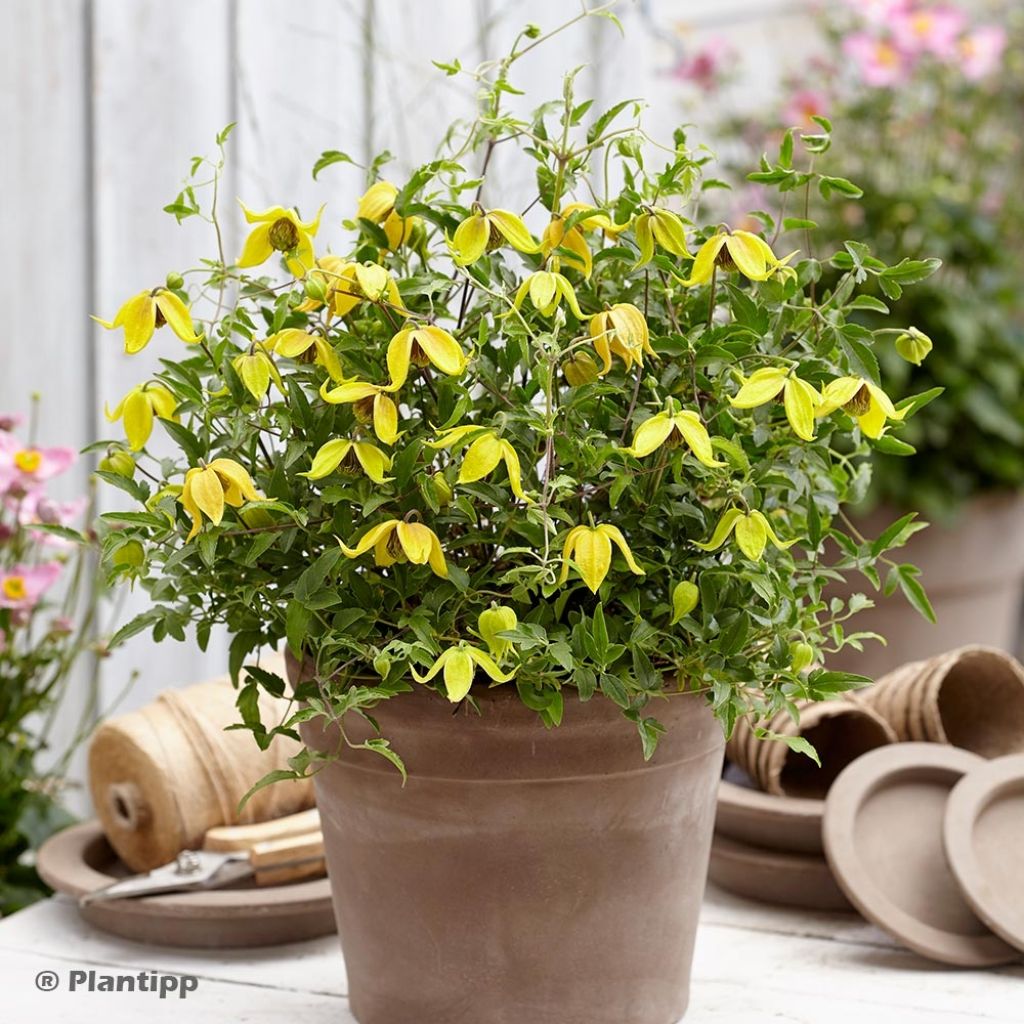

Clematis Little Lemons
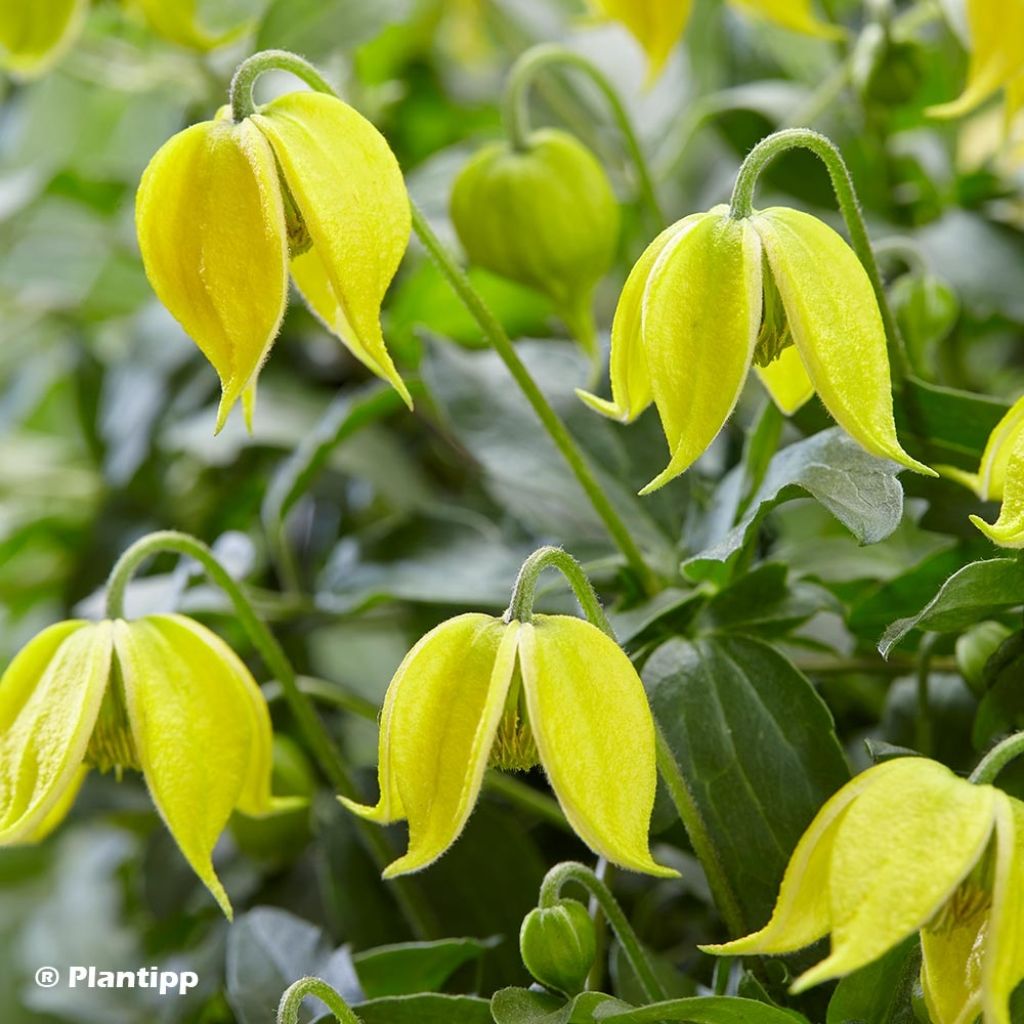

Clematis Little Lemons
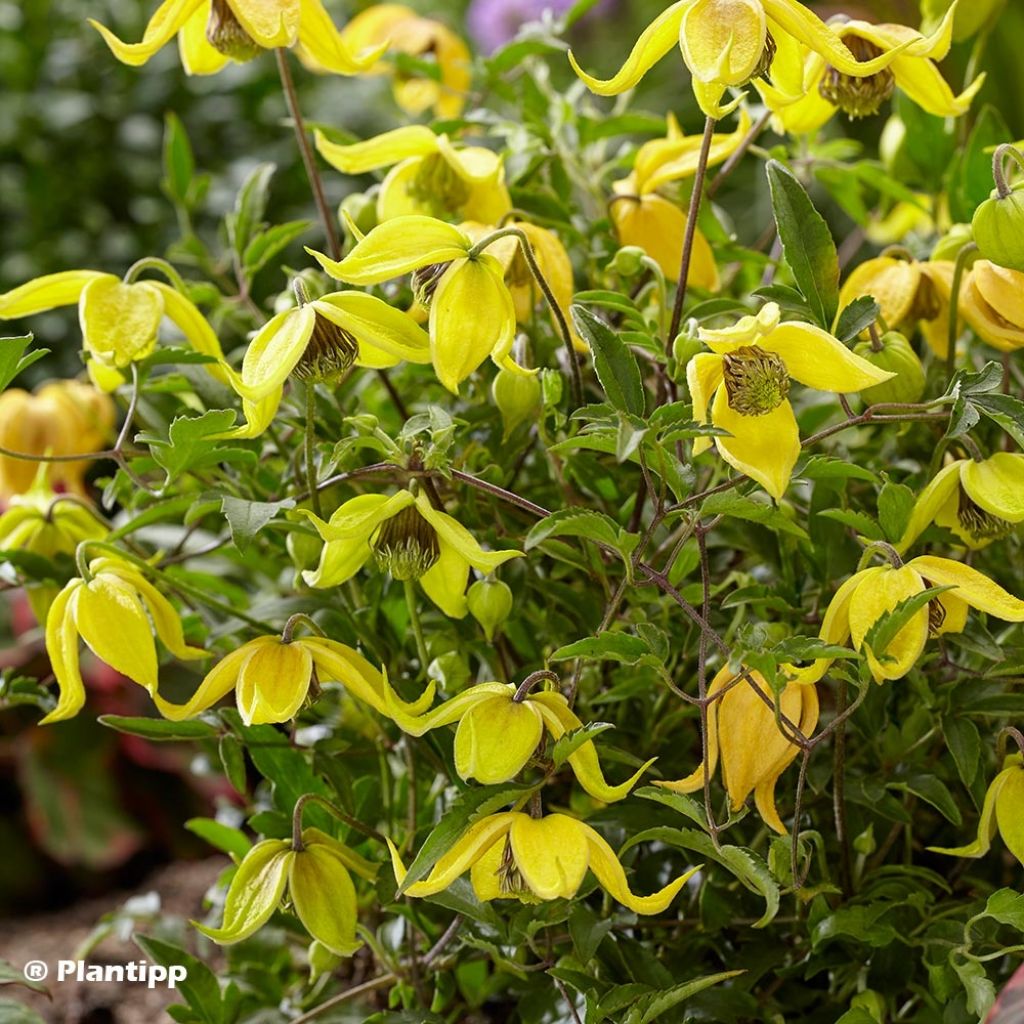

Clematis Little Lemons
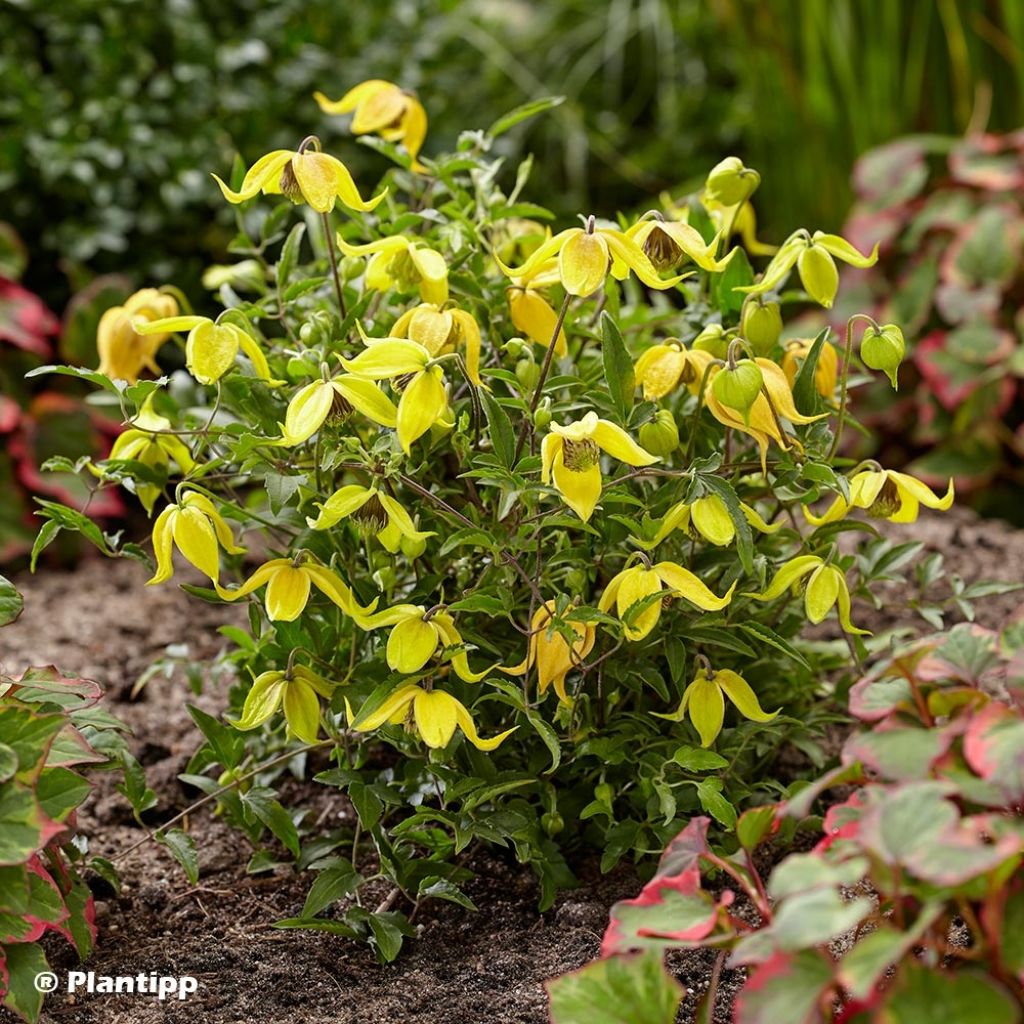

Clematis Little Lemons
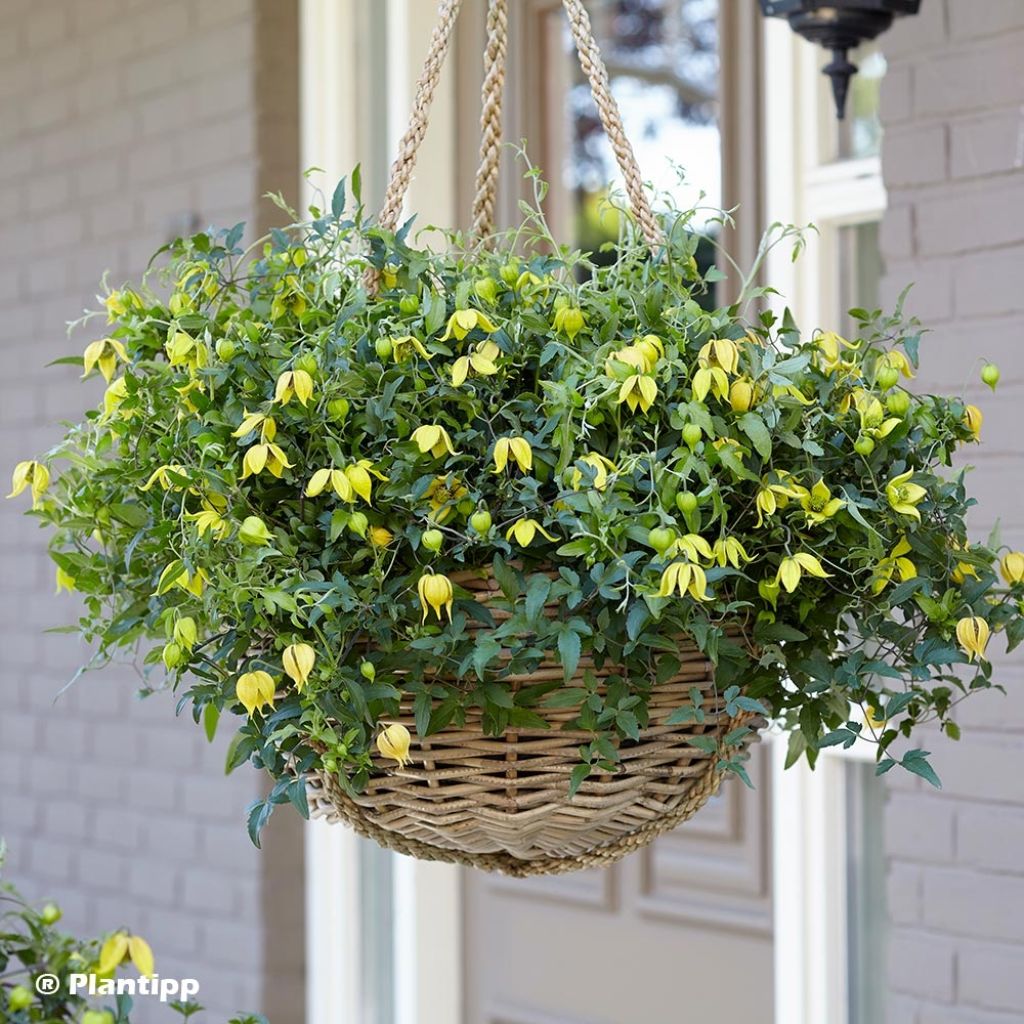

Clematis Little Lemons
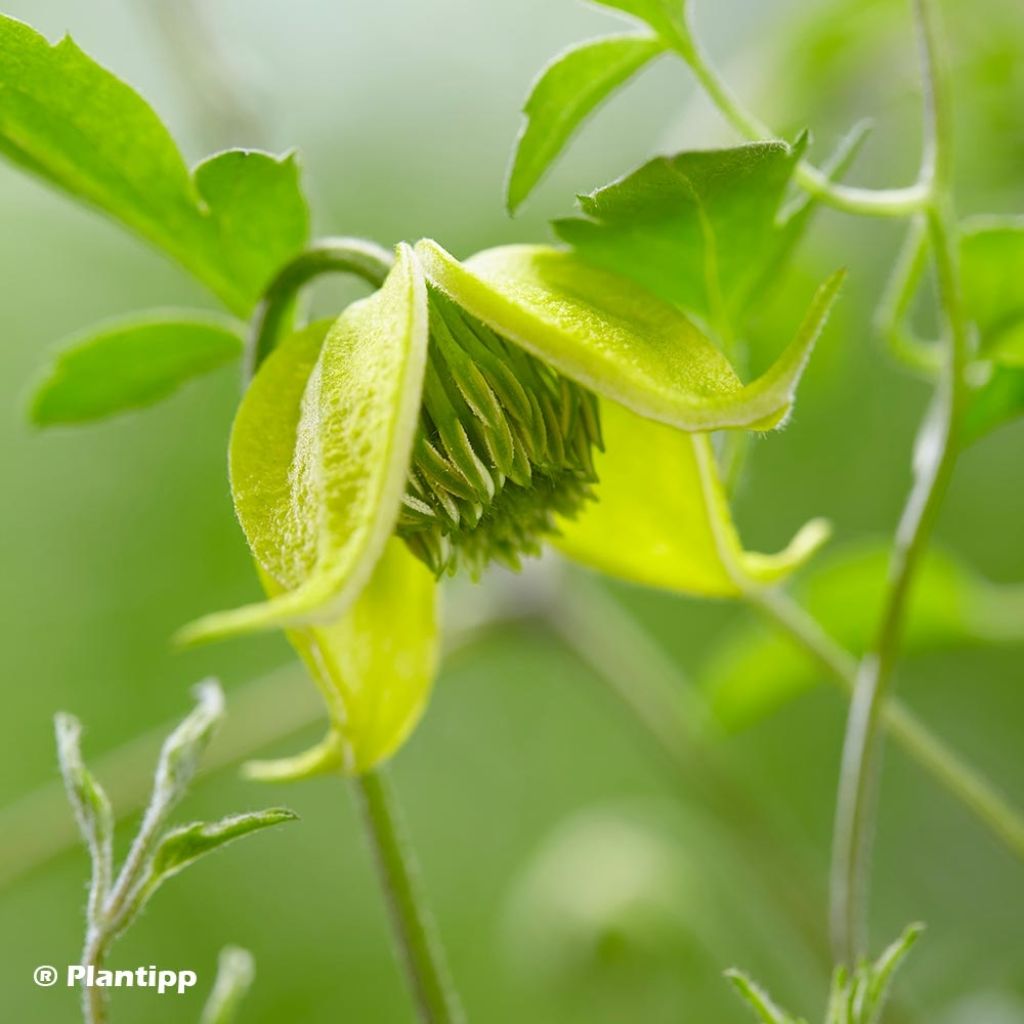

Clematis Little Lemons
Clematis Little Lemons
Clematis x tangutica Little Lemons (‘Zo14100’)
Golden Clematis, Orange Peel Clematis
Poorly packaged plants, crushed, pots broken and overturned. Placed horizontally in the cardboard box, underneath the other plants. The two clematis are truly unsightly, completely dry and with no sign of any greenery in sight. We'll see if they manage to recover, but for now, I remain skeptical.
Mireille, 20/03/2023
Special offer!
Receive a €20 voucher for any order over €90 (excluding delivery costs, credit notes, and plastic-free options)!
1- Add your favorite plants to your cart.
2- Once you have reached €90, confirm your order (you can even choose the delivery date!).
3- As soon as your order is shipped, you will receive an email containing your voucher code, valid for 3 months (90 days).
Your voucher is unique and can only be used once, for any order with a minimum value of €20, excluding delivery costs.
Can be combined with other current offers, non-divisible and non-refundable.
Home or relay delivery (depending on size and destination)
Schedule delivery date,
and select date in basket
This plant carries a 6 months recovery warranty
More information
We guarantee the quality of our plants for a full growing cycle, and will replace at our expense any plant that fails to recover under normal climatic and planting conditions.
Would this plant suit my garden?
Set up your Plantfit profile →
Description
Clematis 'Little Lemons' is a descendant of Clematis tangutica appreciated for its long yellow flowering which has been selected for its particularly compact growth that works well in flower pots or flower beds. It is a weakly climbing perennial plant whose stems are adorned with pretty lemon-yellow, bell-shaped flowers that hang downwards for more than three months from the end of spring, followed by feathery and silvery decorative seed heads.
This recently obtained Clematis Little Lemons, bred in the Netherlands, is a hybrid that carries the genes of Clematis tangutica, a deciduous species native to China, from which it inherited yellow bell-shaped flowers and beautiful seed heads. Like all clematis, 'Little Lemons' belongs to the Ranunculaceae family. This variety was awarded the Gold Medal in its category at the Plantarium de Boskoop in 2019.
It is a deciduous, very cold-resistant (-20°C (-4°F)) plant with a perennial crown, whose above-ground vegetation dries up and dies in winter and regrows in spring. In 'Little Lemons', the slender stems rarely exceed 25 cm (10in) long, with some occasionally reaching 50 cm (20in). They bear foliage divided into long ovate leaflets with visible veins, in a beautiful vibrant green. This variety starts to bloom around May 15th and continues to produce flowers until the end of September. At the tips of the stems and in the axils of the leaves, solitary flowers appear on long peduncles, measuring 2-3 cm (1in) in diameter and facing downwards. Each flower is composed of 4 lemon-yellow, tapering tepals, slightly recurved at their tips. In the centre, there is a beautiful cluster of green stamens. The terminal flowers transform into superb feathery, airy, and silvery seed heads, while the flowers on lateral stems give way to seed heads without 'plumes'.
The little lemon yellow lanterns of the 'Little Lemons' Clematis dot its very green foliage to create an original and cheerful decoration for the terrace or balcony. It is also an excellent perennial to plant in flower beds and borders where you could combine it with other dwarf or herbaceous clematis with blue flowers (Clematis integrifolia, C. heracleifolia, etc.). Its pretty yellow flowers go perfectly with the blue of Salvia uliginosa in moist soil, perennial flax, and delphiniums. Dwarf asters will also be good companions, offering shade at the base and a presence in autumn.
Clematis Little Lemons in pictures
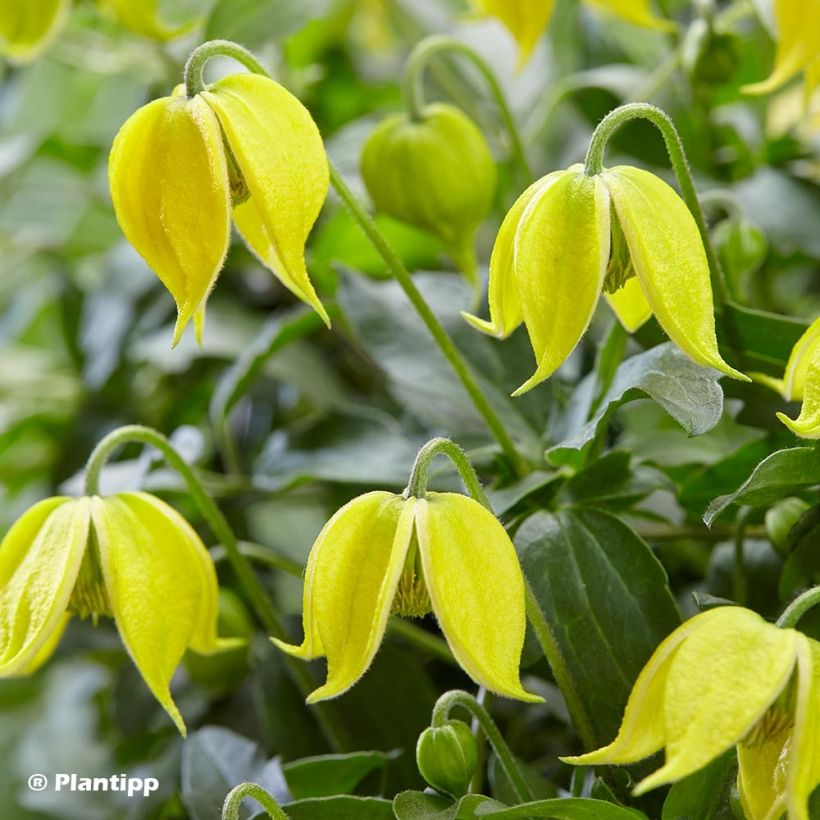

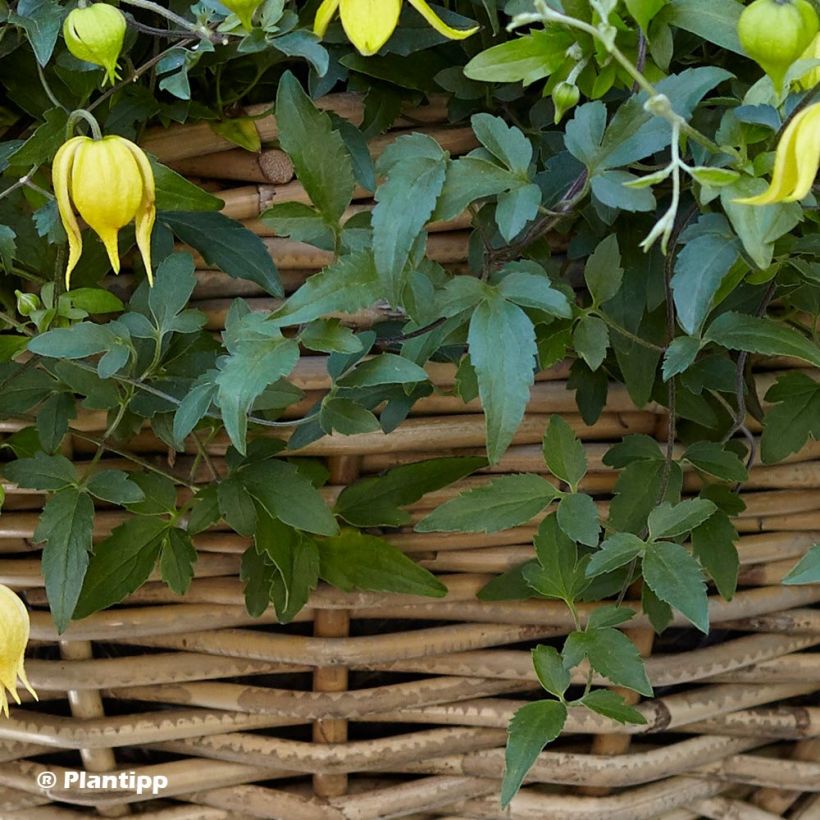

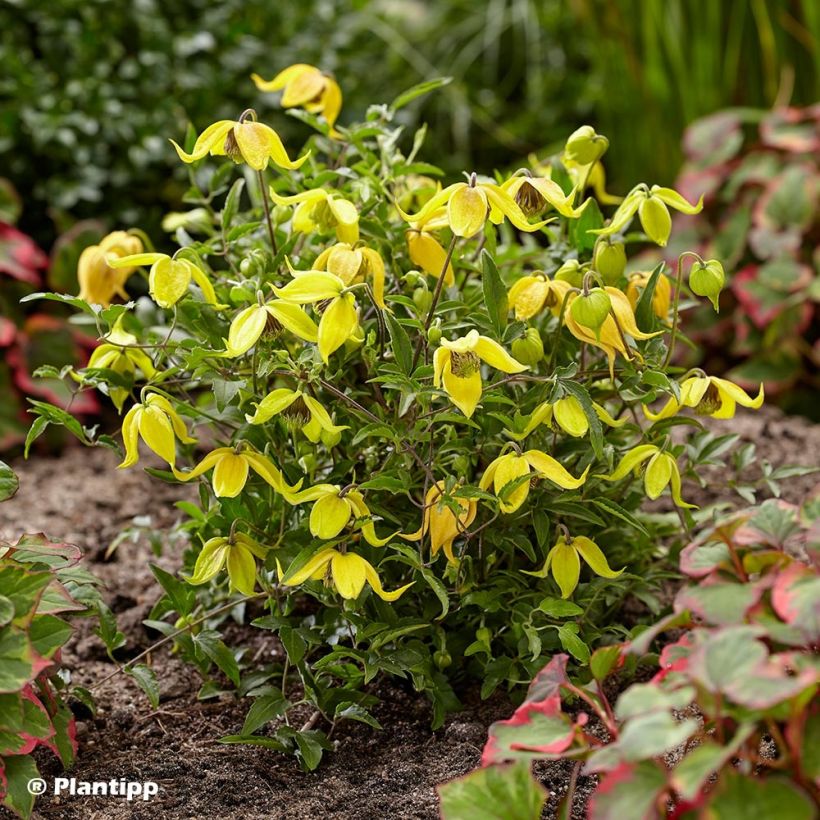

Plant habit
Flowering
Foliage
Botanical data
Clematis
x tangutica
Little Lemons (‘Zo14100’)
Ranunculaceae
Golden Clematis, Orange Peel Clematis
Cultivar or hybrid
Other Clematis Tangutica
View all →Planting and care
Clematis Little Lemons can be grown in pots or in the ground and is cold-resistant (-20°C (-4°F) at least). It should be planted in spring or autumn, at a depth of 5 cm (2in), with the root ball placed diagonally on the soil. Preferably with the head in the sun (or in partial shade) and the foot in the shade. You can place a flat tile in front of the crown or plant ground cover plants or a perennial Geranium to achieve this. It prefers soil that is rather moist but not waterlogged, well-drained, well-worked, and rich. Water regularly for a few weeks after planting, but not in large quantities. Prune annually in March to 10 cm (0 to 4in) above the ground. In pots, water regularly and provide flowering plant fertiliser. Watch out for pests such as aphids, and slugs and snails.
Planting period
Intended location
Care
Planting & care advice
-
, onOrder confirmed
Reply from on Promesse de fleurs
Similar products
Haven't found what you were looking for?
Hardiness is the lowest winter temperature a plant can endure without suffering serious damage or even dying. However, hardiness is affected by location (a sheltered area, such as a patio), protection (winter cover) and soil type (hardiness is improved by well-drained soil).

Photo Sharing Terms & Conditions
In order to encourage gardeners to interact and share their experiences, Promesse de fleurs offers various media enabling content to be uploaded onto its Site - in particular via the ‘Photo sharing’ module.
The User agrees to refrain from:
- Posting any content that is illegal, prejudicial, insulting, racist, inciteful to hatred, revisionist, contrary to public decency, that infringes on privacy or on the privacy rights of third parties, in particular the publicity rights of persons and goods, intellectual property rights, or the right to privacy.
- Submitting content on behalf of a third party;
- Impersonate the identity of a third party and/or publish any personal information about a third party;
In general, the User undertakes to refrain from any unethical behaviour.
All Content (in particular text, comments, files, images, photos, videos, creative works, etc.), which may be subject to property or intellectual property rights, image or other private rights, shall remain the property of the User, subject to the limited rights granted by the terms of the licence granted by Promesse de fleurs as stated below. Users are at liberty to publish or not to publish such Content on the Site, notably via the ‘Photo Sharing’ facility, and accept that this Content shall be made public and freely accessible, notably on the Internet.
Users further acknowledge, undertake to have ,and guarantee that they hold all necessary rights and permissions to publish such material on the Site, in particular with regard to the legislation in force pertaining to any privacy, property, intellectual property, image, or contractual rights, or rights of any other nature. By publishing such Content on the Site, Users acknowledge accepting full liability as publishers of the Content within the meaning of the law, and grant Promesse de fleurs, free of charge, an inclusive, worldwide licence for the said Content for the entire duration of its publication, including all reproduction, representation, up/downloading, displaying, performing, transmission, and storage rights.
Users also grant permission for their name to be linked to the Content and accept that this link may not always be made available.
By engaging in posting material, Users consent to their Content becoming automatically accessible on the Internet, in particular on other sites and/or blogs and/or web pages of the Promesse de fleurs site, including in particular social pages and the Promesse de fleurs catalogue.
Users may secure the removal of entrusted content free of charge by issuing a simple request via our contact form.
The flowering period indicated on our website applies to countries and regions located in USDA zone 8 (France, the United Kingdom, Ireland, the Netherlands, etc.)
It will vary according to where you live:
- In zones 9 to 10 (Italy, Spain, Greece, etc.), flowering will occur about 2 to 4 weeks earlier.
- In zones 6 to 7 (Germany, Poland, Slovenia, and lower mountainous regions), flowering will be delayed by 2 to 3 weeks.
- In zone 5 (Central Europe, Scandinavia), blooming will be delayed by 3 to 5 weeks.
In temperate climates, pruning of spring-flowering shrubs (forsythia, spireas, etc.) should be done just after flowering.
Pruning of summer-flowering shrubs (Indian Lilac, Perovskia, etc.) can be done in winter or spring.
In cold regions as well as with frost-sensitive plants, avoid pruning too early when severe frosts may still occur.
The planting period indicated on our website applies to countries and regions located in USDA zone 8 (France, United Kingdom, Ireland, Netherlands).
It will vary according to where you live:
- In Mediterranean zones (Marseille, Madrid, Milan, etc.), autumn and winter are the best planting periods.
- In continental zones (Strasbourg, Munich, Vienna, etc.), delay planting by 2 to 3 weeks in spring and bring it forward by 2 to 4 weeks in autumn.
- In mountainous regions (the Alps, Pyrenees, Carpathians, etc.), it is best to plant in late spring (May-June) or late summer (August-September).
The harvesting period indicated on our website applies to countries and regions in USDA zone 8 (France, England, Ireland, the Netherlands).
In colder areas (Scandinavia, Poland, Austria...) fruit and vegetable harvests are likely to be delayed by 3-4 weeks.
In warmer areas (Italy, Spain, Greece, etc.), harvesting will probably take place earlier, depending on weather conditions.
The sowing periods indicated on our website apply to countries and regions within USDA Zone 8 (France, UK, Ireland, Netherlands).
In colder areas (Scandinavia, Poland, Austria...), delay any outdoor sowing by 3-4 weeks, or sow under glass.
In warmer climes (Italy, Spain, Greece, etc.), bring outdoor sowing forward by a few weeks.































